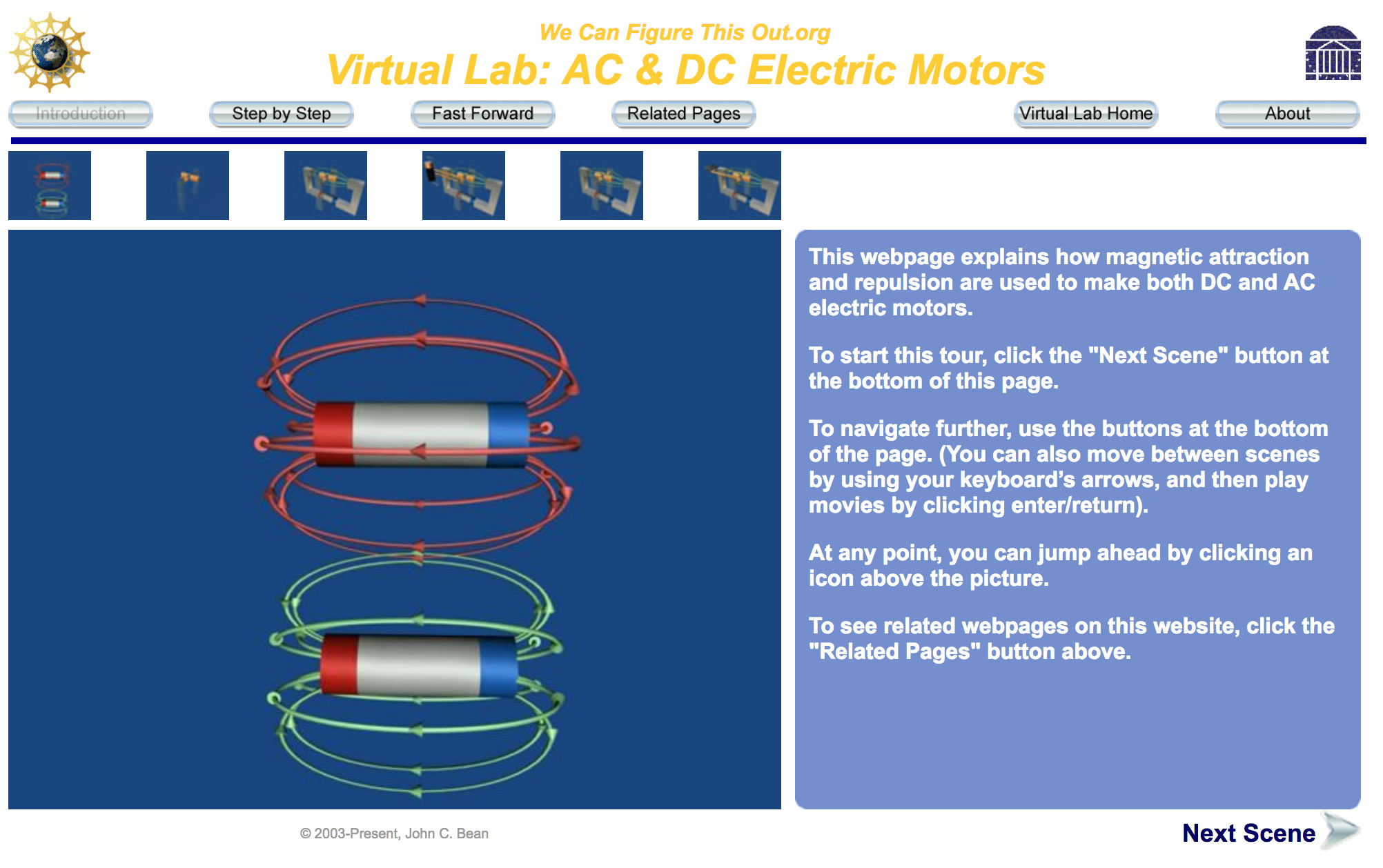Corresponding Web Notes: Magnetic Induction ( pptx
/ pdf
/ key)
My
Virtual Lab animation explaining DC and AC Motors (link):

Induction Motors (a.k.a.
"brushless" motors):
My bonus animations on:
Real Transformers vs. Two Simple Side by Side Coils
Using a "ferromagnetic pole piece" to increase the coupling of
magnetic field between the coils:
Ferromagnetic bar draws out the magnetic field so that rather
than just brushing the second coil
it now extends all of the way through it:
A design with even better magnetic coupling:
Here the ferromagnetic shape causes the magnetic field lines
to swing around,
so that almost all of them pass clear through the second
coil
Finally, a compact, strongly coupled design (with no stray
magnetic fields) = Common TRANSFORMER:
Coil #2 is inside coil # 1 (getting the full
benefit of it's core magnetic field)
Ferromagnetic shape then traps the rest of oscillating
field,
which then can't move charges elsewhere
(wasting electrical energy)
Minimizing heating
of "pole pieces" to increase energy efficiency
Looking more closely at what happens within a pole piece:
Permanent magnet without pole pieces =>
Permanent magnet with pole pieces =>
AC Powered electromagnet with pole pieces:
Pole pieces STRETCH OUT the magnetic field
But inside the pole piece, the magnetic field sets up loops of
current
And current means electrons bumping into atoms, heating them
up (wasting power)
Growing / Shrinking magnetic field MOVES through
the pole pieces
INDUCING loops of current (here called "eddy
currents" - in blue)
To reduce eddy currents (and power lost to heating):
Make pole pieces out of stacks of metal plates (insulated
from one another)
Breaking up paths over which large eddy currents want to
flow
(It's easy to insulate: Just paint both sides with
insulating lacquer!)
Copyright: John C. Bean
|

